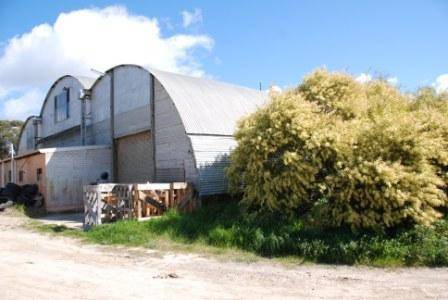| Back to search results » | Back to search page » |
|
Former Quonset Huts
Other NameAuto Workshop & Repairs Location175 - 185 Marong Road,, GOLDEN SQUARE VIC 3555 - Property No B5438
File NumberB5438LevelState |
|
Statement of Significance
What is significant? The Auto Workshop and Petrol Station was most likely built soon after the site was purchased by P. J. O'Sullivan in April 1955, who was soon granted a licence for a panel beating and car service and repairs shop. In the 1980s it was purchased by 'Doc' Doherty who used the workshop at least in part for motor sport car repairs. Greg Waddington continued this tradition from 1988, at first leasing from 'Doc' Doherty, and since the mid 1990s from the petrol company that bought the site. Greg has continued the specialist focus on motor sport and unique repairs (older sports cars and older cars in general). Neither the workshop nor the petrol station sections appear to have been substantially altered since construction.
The workshop is made from portions of three semi-cylindrical Quonset huts joined together. It is very likely that the huts were among those relocated to Australia from the former US Base on Manus Island north of New Guinea in the early 1950s. Quonset huts were a US version of the earlier English Nissen hut, and were first manufactured in 1941 at Quonset Point, Rhode Island (hence the name), and built by the thousand for WWII bases across all theatres of war. The Manus base was established in 1944, which was transferred to Australian control after WWII and in the early 1950s many huts were dismantled and sent to Australia, for use in migrant camps, or sold.
The workshop is a triple arched structure made from three Quonset huts, side by side, with the central section higher, to form one large interior space. The perimeter of the structure is set on low masonry walls, but the dominating form is one of arched space.
The main elements of the roofs are standard for Quonset huts, using the steel ribs at 4ft spacing, purlins, and base plates, and retaining the ventilation gap in the two outer sections. The structure is supported along the two joins where the roofs meet on locally constructed brackets, housing box gutters, welded to galvanised steel web trusses approximately three feet deep supported by steel posts. The main roofs are clad in the vertically aligned corrugated steel roof sheets, with horizontal sheets to the lower sections of each side. The end walls are also clad in corrugated iron.
The front petrol station section is a rectangular painted masonry structure with a parapet hiding a skillion roof, housing offices and shopfront and there is a post supported flat roofed steel framed canopy over the petrol bowsers.
How is it significant? The building is architecturally and, historically significant at State level.
Why is it significant? The building is architecturally significant for its unusual form, the outcome of its construction from sections of pre-existing demountable arched structures. The configuration of portions of three Quonset huts side by side to form one interior space is believed to be unique in Australia. It demonstrates a high degree of creativity in the way the three structures have been skilfully combined in the vernacular tradition of adaptive reuse of materials. It is a unique use of what was once a commonly seen building, now relatively rare.
Historically the building has significance for its connection with World War II, and the post war shortage of building materials. It is constructed from three Quonset huts, manufactured by the thousand by the US for WWII, and the elements of this particular structure probably come from Manus Island, the largest US base in the Pacific. The base was later occupied by the Australian Army, and many of its structures were dismantled in the 1950s and shipped to Australia for sale or government purposes, especially migrant hostels.
Classified: 28/03/2011
Group
Military
Category
Defence Manufacturing




